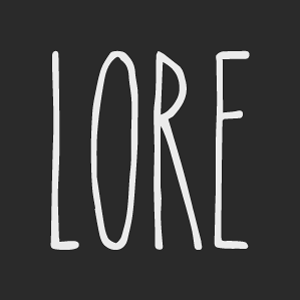“The Apothecaries’ Hall.” Heritage of London Trust. https://www.heritageoflondon.org/projects/the-apothecaries%E2%80%99-hall.
Badke, David. “Sources: Unicorn.” The Medieval Bestiary. https://bestiary.ca/beasts/beastsource140.htm.
Bane, Theresa. Encyclopedia of Fairies in World Folklore and Mythology. Jefferson: McFarland & Company, Inc., Publishers, 2013. Digital. https://archive.org/details/encyclopediaoffa0000bane/page/n3/mode/2up.
Barrie, J. M. Peter and Wendy | Margaret Ogilvy. New York: Charles Scribner’s Sons, 1912. Digital. https://archive.org/details/PeterAndWendy/page/n245/mode/2up.
Beer, Rüdiger Robert. Unicorn: Myth and Reality. New York: Van Nostrand Reinhold Company, 1977. Digital. https://archive.org/details/unicornmythreali00beer/page/108/mode/2up.
Berger, Miriam. “The Narwhal Tusk Has a Wondrous and Mystical History. A New Chapter Was Added on London Bridge.” The Washington Post. 11/30/2019. https://www.washingtonpost.com/world/2019/11/30/narwhal-tusk-has-wondrous-mystical-history-new-chapter-was-added-london-bridge/.
Berlage, Laura. “The Maiden, The Unicorn, and Symbolic Transfer.” Erindale Tapestry Studio. https://erindaletapestrystudio.com/unicorn-series/the-maiden-the-unicorn-and-symbolic-tranfer/.
Blackwood, Algernon. A Prisoner in Fairyland. Sioux Falls: NuVision Publications, LLC, 2010. Digital. https://archive.org/details/prisonerinfairyl0000alge/page/34/mode/2up.
Briggs, Katharine Mary. An Encyclopedia of Fairies, Hobgoblins, Brownies, Bogies, and Other Supernatural Creatures. New York: Pantheon Books, 1977. Digital. https://archive.org/details/an-encyclopedia-of-fairies-hobgoblins-brownies-bogies-and-ot/page/432/mode/2up.
De Vitis, Mark. “Explainer: The Symbolism of The Lady and the Unicorn Tapestry Cycle.” The Conversation. https://theconversation.com/explainer-the-symbolism-of-the-lady-and-the-unicorn-tapestry-cycle-91325.
Erlande-Brandenburg, Alain. The Lady and the Unicorn. Paris, La Réunion des Musées Nationaux, 1989.
“Fairy Dust.” Mythical Bestiary Wikia. https://mythical-bestiary.fandom.com/wiki/Fairy_dust.
Frigiola, Heather. Monsters and Mythical Creatures From Around the World. Atglen: Red Feather, 2019.
Garry, Jane, and El-Shamy, Hasan. Archetypes and Motifs in Folklore and Literature: A Handbook. Armonk: M.E. Sharpe, 2005. E-book. https://www.google.com/books/edition/Archetypes_and_Motifs_in_Folklore_and_Li/Cn6pWMverBIC?hl=en&gbpv=1.
Graham, Jane. “Unicorns.” The Copenhagen Post. 7/4/2016. https://cphpost.dk/2016-07-04/business-education/ole-worm-the-man-who-studied-unicorns/.
Gruneberg, Kayta. “Desirable or Disturbing? An Analysis of The Sandman.” The Cross Section. 5/1/2014. https://crosssection.gns.wisc.edu/2014/05/01/desirable-or-disturbing-an-analysis-of-the-sandman/.
Harvey, Ian. “The Vikings Sold Narwhal Tusks as Unicorn Horns.” The Vintage News. 2017. https://www.thevintagenews.com/2017/03/21/the-vikings-sold-narwhal-tusks-as-unicorn-horns/.
Herodotus. “Herodotus, The Histories (English).” 4.191.3. Greek Texts & Translations. https://anastrophe.uchicago.edu/cgi-bin/perseus/citequery3.pl?dbname=GreekNov21&getid=1&query=Hdt.%204.191.3.
“A History of Fairy Dust.” Writing in Margins. 4/13/2020. https://writinginmargins.weebly.com/home/a-history-of-fairy-dust.
“Introduction.” The Metropolitan Museum of Art Bulletin, Vol. 44, No. 1, 1986, pp.3-11. JSTOR. https://doi.org/10.2307/3258965.
Lavers, Chris. The Natural History of Unicorns. Harper Collins, 2009. E-book.
Magnus, Olaus, Creator. Map of the Sea. Rome: Antoine Lafréy. Map. Retrieved from the Library of Congress. www.loc.gov/item/2021668418/.
Meares, Hadley. “How ‘Unicorn Horns’ Became the Poison Antidote of Choice for Paranoid Royals.” HISTORY. A&E Television Networks. Updated 4/16/2019. https://www.history.com/news/unicorn-horns-royal-protection-poison-antidote.
Mikolic, Amanda. “Hunting for a Unicorn Horn: Narwhal Tusks in Medieval Monsters.” Cleveland Museum of Art. 9/6/2019. https://medium.com/cma-thinker/hunting-for-a-unicorn-horn-narwhal-tusks-in-medieval-monsters-1455c03fb529.
Murdoch, Florence. “Trailing the Bestiaries.” The American Magazine of Art, Vol. 24, No. 1, 1932, pp. 5-12. JSTOR. http://www.jstor.org/stable/23935672.
Pekantytär, Niina. “Unicorns in Asian Myths and Legends.” Medium. 1/26/2022. https://littlewomen.medium.com/unicorns-in-asian-myths-and-legends-9d81a7ee5e72.
Sand, George. “Fairy Dust.” The Strand Magazine, pp.536-543. https://www.victorianvoices.net/ARTICLES/FICTION/Children/1891/FairyDust.pdf.
Shakespeare, William. A Midsummer Night’s Dream. New York: Washington Square Press, 1958. Digital. https://archive.org/details/midsummernightsd0000shak_d7u6/page/n5/mode/2up.
Shepard, Odell. The Lore of the Unicorn: Myths and Legends. London: Senate, 1996. Digital. https://archive.org/details/loreofunicorn0000shep_s5g0/page/100/mode/2up.
Skye, Alexander. Unicorns: the Myths, Legends, & Lore. New York: Adams Media, 2015. Digital. https://archive.org/details/isbn_9781507205945/page/86/mode/2up.
Suckling, Nigel. Unicorns. London: Facts, Figures & Fun, 2007. Digital. https://archive.org/details/unicorns0000suck/page/n7/mode/2up.
“Unicorns—A Brief History.” St Neots Museum. https://www.stneotsmuseum.org.uk/articles/unicorns-a-brief-history/.
“The Unicorn Tapestries.” The Metropolitan Museum of Art Bulletin, Vol. 32, No. 1, 1973, pp.177-224. JSTOR. https://doi.org/10.2307/3258590.
“The Unicorn Tapestries (1495-1505).” The Public Domain Review. https://publicdomainreview.org/collection/the-unicorn-tapestries-1495-1505/.
“Unicorns, West and East.” American Museum of Natural History. https://www.amnh.org/exhibitions/mythic-creatures/land/unicorns-west-and-east.
“Unleashing the Magic of Fairy Dust.” Insight Datum. 6/15/2024. https://www.insightdatum.com/unleashing-the-magic-of-fairy-dust/.
Wall, Wendy. “Why Does Puck Sweep?: Fairylore, Merry Wives, and Social Struggle.” Shakespeare Quarterly, Vol. 52, No. 1, 2001, pp. 67-106. JSTOR. http://www.jstor.org/stable/3648647.
“What is a Narwhal?” NOAA Ocean Exploration. https://oceanexplorer.noaa.gov/facts/narwhal.html.
